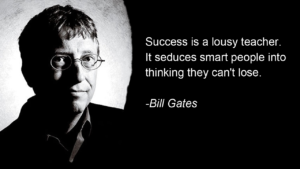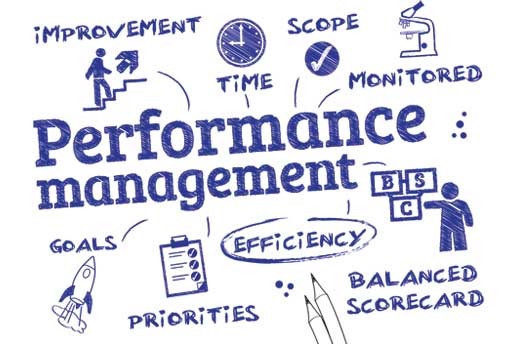
How to encourage employees to take responsibility and perform with excellence?
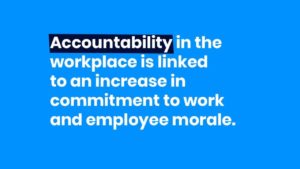
How to encourage employees to take responsibility and perform with excellence? Responsibility comes only when a task is given. A task given to an employee is on trust and accountability.

How to encourage employees to take responsibility and perform with excellence?
The world of work has been changed drastically within the last 20 years. In olden days, people took orders. Workers were expected to park their brains, shut their mouths and work their daily hours.
But somewhere along the way, some employers and organisations got smart. They began to realise that they could do more than buy their workers’ time. They could engage their teams’ heads and hearts as well.
In the new work world, it is all about taking responsibility. Every employee is expected to take responsibility to use all their talents and perform with excellence.
So what all things can you do to encourage your team to take responsibility and perform with excellence? Here are the seven things that work.
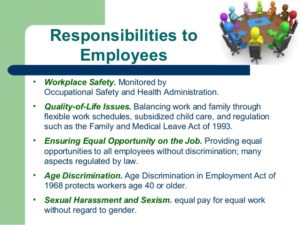
How to encourage employees to take responsibility?

- Help people get a vision of excellence.
Lots of people do not even know what “excellence” means. After all, they are doing their job and think that is good enough. They are competent but not excellent. Competence is the enemy of the great. So show the employees your vision of excellence that goes beyond competence, or create such a vision together.
- Expect excellence.
It sounds simple enough. But many employers and leaders do just the opposite. When they oversee the detail of every function, they are saying, in effect, they don’t expect excellence from their people. They expect failure.
Just be careful. It’s very difficult to disguise your expectations. Never expect others to shrug responsibility and do just enough to get by. Once they sense that, they will act accordingly. Expect and project. Expect excellence from your people and learn to project your expectation. And then…
- Lead by example.
When you walk your talk, people will listen to you. For instance, if you take responsibility for excellence, there is a greater chance for people around you also take responsibility and practice excellence.
Employees won’t take responsibility for excellence until they see you demanding excellence from themselves and others. Then only will they see that excellence is more than a hyped-up, flavour-of-the-month buzz word or training class? Rather, excellence is something that leaders, mature people, effective entrepreneurs, and managers take seriously.
Walk your talk. Never ever say something like “quality is king around here” and later ship out a few defective items when you are crunched for time.
- Get a commitment to excellence.
It’s unbelievably powerful. We would rather have one dedicated person working WITH us than three simply working FOR us.
When you want employees to take responsibility for excellence, get a commitment from the other person that he CAN do it and WILL do it. Get the other person to make a strong decision. It all begins with making a plan and saying, ‘This is what I am going to do: I am going to make it happen, no matter what happens!'”
To get that kind of dedication, ask the percentage question: To what degree you are committed to excellence on this task? And what will it take you to get 100% on board? After all, there is a time when you should move from deliberation to firm decision and from consideration to commitment.
- Reward responsibility.
When employees take responsibility for excellence, they typically do it for a reason. Maybe the work makes them feel good. It helps them master a skill, or move ahead in their career. But there is always a reason.
One of the major reasons people take responsibility is they want to receive praise. So give it to them. Praise employees who perform excellently. You will get amazed at the difference it can make in someone’s life or career.
Make sure you are doing something that rewards others for taking responsibility. And if they make some missteps along the way, all you have to do is…
- Use responsibility-encouraging words.
Correction does much, but encouragement does more. When employees take on more and more responsibility, they are bound to make some mistakes, and some correction is needed.
To be specific, don’t talk to an employee about his “weaknesses.” That sounds too much. It is like a set of permanent character flaws. A focus on “weaknesses” will turn an employee into a pessimist. Because he will think, “That is just the way I am. There is nothing I can do about it.”
Instead, when you are correcting less-than-excellent performance, talk about the employees’ “improvement opportunities.” That way, you are describing a process they will take responsibility for fixing. And that puts them back on the path to excellence.
Use words that tell the person he can do some things to improve. It is within his power.
- Analyse the process and payoff of admitting responsibility.
Excellence does not randomly strike like lightning. It is the outcome of certain acts of responsibility taking. And the process can be replicated if it is understood.
So it isn’t enough to acknowledge the employees’ excellence. The ideal way to keep it going is to help him realise the reason it came about in the first place. HOW did things turn out right, and HOW can he replicate that?
For example, if a person had an unusually good month in sales, recognize it and ask her why. Did he use a different strategy to prospecting or in closing the sale? Ifsoever he makes more sales calls or approaches a different type of clientele? Did he create a new presentation?
By asking such questions, you can help the person learn how the process of responsibility taking led to significant payoffs.
In gone days people used to say “that is not my job” and get away with it. In today’s work world, the only ones who will survive are those who take responsibility for excellence. With these seven useful strategies, you can get people to do exactly that.

Should companies stop hiring during the coronavirus pandemic?
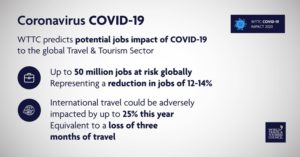
Should companies stop hiring during the coronavirus pandemic? More and more companies are using this crisis in hiring new talents in their spare time they do have.
Coronavirus is continuing its course by spreading throughout 203 nations and territories in the world. It leaves many people numb without knowing what will happen next. Many employers think whether they all should suspend their hiring process until the virus has run its course.

Should companies stop hiring during the coronavirus pandemic?

If you also have any vacant chair, you can adopt the same process Google is using to fulfil its hiring needs. Do it virtually! At a time when online recruiting is getting adopted so heavily, this seems to be the most logical option, as most of the recruiting process is done via phone calls and e-mail communication. It helps recruit while avoiding human contact in the wake of the coronavirus. Here are a few tips for making your recruiting process solely online.
Should companies stop hiring during the coronavirus pandemic? The crisis is the right time to have a clear thought of the future. The spare time is the time to set the goals straight.
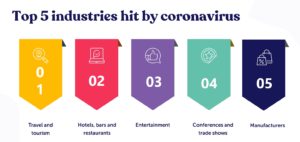
How to make online recruitment or remote recruitment?

- Candidate Outreach
Job fairs are a great source to top talent. But in this tough phase avoiding face-to-face communication isn’t suit well. So, online adopting options are the best route to travel. These days, more and more recruiters and hiring managers are turning to online methods. It let them to source and connect with potential candidates. Seeing as a vast majority of job seekers are online, that is your best bet for finding top talent. But where can you search for them?
Well. Start with social media, including LinkedIn, Facebook, and Twitter. They are the most popular social media platforms. If you tailor your messaging just right, you will be sourcing talent within no time! Get a few tips to start recruiting through social media:
- Set up a definite feed for job posts if you have many vacancies to fill.
- Utilise social media functions to get quick access to the application process.
- Ensure the people responsible for social media response are incredibly sharp when responding to candidate inquiries.
- Use hashtags to draw attention to the organisation when appropriate.
- Encourage your employees to be active on social media platforms. They can forward job openings to people in their network.
- Consider hosting online events to encourage candidate interaction with the organisation.
- Consider using the paid options offered by different social media platforms to host or boost a job post. It may include advertising or other specific job post functionalities.
- Ensure your social media pages are optimised to be found in search results.
- Use social media to seek out and proactively reach out to passive candidates.
- Utilise the data analytics tools that social media sites provide. It helps tailor your posts to garner more interaction.
Social media is the best platform for recruiters to hunt their target candidates.
- Conducting Interviews
After you have found the perfect candidates, the next comes interviewing them. Traditionally, most firms start with a phone screen, And if the person seems to fit the mould, he or she is called in for a face-to-face interview. But during this time, conducting in-person interviews may have your recruiters on edge. But with updated technology, it doesn’t have to be that way!
At first, people may be wondering whether candidates even want to conduct interviews virtually. But candidates are receptive to this method. Candidates really appreciate the opportunity to attend interview from a place that is convenient for them. There is a strong sense of appreciation from candidates when you show concern for their health, schedule or family situation. It doesn’t need to have a major disaster to implement virtual screening. They are always useful for an employer and the candidate.
Conducting virtual interviews doesn’t need too much technology, either. If you have a web camera on your computer, or your cell phone has Skype-like features, you can get the job done easily. And new technologies continue to appear in the online recruiting world.
- Get LinkedIn’s talent hub platform
LinkedIn is now allowing interviewing capabilities via its Talent Hub platform. This new benefit let users’ interview candidates at anytime, anywhere. Users can also access writing, coding speaking, and soft skills. And even check the authenticity of candidates through secure proctoring. Instead of evaluating candidates in-house, you can do everything online!
- Schedule interviews virtually
Apart from that, even scheduling interviews can be done virtually! No more playing phone tag. And no more waiting for a candidate to get out of office before calling you back to schedule an interview. Now applicants can access your calendar via Web-based applications to pick a time and date that works best for them.
If in case you want to dismiss the interview, you can also ask candidates to submit a project-based assessment. Instead of an interview, for some roles, it may be suitable to ask candidates to provide a completed project. The requirements will be created and detailed in advance by the hiring company. It shows the individual’s skills upfront and tells you a lot about the applicant by how he or she approaches the entire project.
- Head straight for assessment
One last strategy to try is to scrap the interview again and head straight for the assessment portion of the recruiting process. This step may or may not oppose the need for an in-person interview. But the idea is to shake up the hiring process by going to assessment testing promptly rather than waiting until you have an applicant (or shortlist) in mind.
This stage may involve skills-based tests, logic tests, behavioural tests, personality tests, etc. The potential benefit here is that you may discover there are more potential candidates for the role than it would have thought. Some candidate may excel at the necessary assessments, even though those same people may have been overlooked if the traditional hiring path had been followed.
While coronavirus fears continue to plague all over the world, it’s time to start looking into technology-based aspects of the recruiting process. As the world frequently becomes reliant on technology, you will at least be ahead of the curve when we all go fully digital!


What are the right ways for HR to handle coronavirus concerns in the workplace?

The right ways for HR to handle coronavirus concerns in the workplace
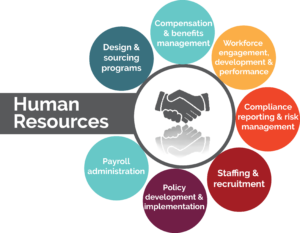
The COVID-19 coronavirus became the accelerator for one of the greatest workspace transformations of our lifetime. How we work, with whom we work, where we work, how we communicate and the ways we learn got changed completely. It has taken a few weeks for the COVID-19 to shut down most restaurants, malls, shops, and gyms. To stop spreading of this contagious disease govt encourage 88% of workers to work from home, despite whether or not they are showing symptoms of coronavirus.
It leads businesses to analyze current policies in favour of smarter ways to prevent workplace contamination and calm employee anxiety. But the larger question is: how this massive transformation will impact the workplace, you, your team, and your organization? Here are our insights on how HR should handle coronavirus concerns.

How should HR to handle coronavirus concerns in the workplace?

- Transparent communication to employees
Communication and decisive action help both to inform employees about changes in company policies and to assuage anxiety and fear. Be accurate, prompt, and honest in your communications. Outline the measures you are taking and why you are taking them.
HR to handle coronavirus concerns in the workplace is crucial at the times of a pandemic.
Adopt a multi-pronged approach for communicating to your HR team. Use electronic means but adopt physical communication methods as well.
Send an email to reassure employees you are paying close attention to the virus, and it’s spread. Explain the precautions you are taking to keep the office and your worker safe. Share reputable sources for information like the CDC and WHO. Designate a point of contact for COVID-19-related queries in the HR department.
Post notices around the workspace with the signs and symptoms to watch out for (cough, fever, and shortness of breath). And to remind workers proper cough etiquette and hygiene.
- Limit employee travel
Curb the travel plans of your employee as much as possible. Postpone or cancel business trips to any of the nations that have been granted level-3 travel restriction by the CDC.
- Cancel face-to-face meetings
Minimize person-to-person contact by cancelling face-to-face meetings. We know it’s hard to replicate the rapport you can build in face-to-face meetings, especially with new clients or business partners. But keeping everyone healthy and safe is what’s most important right now. You can go for video conferences or a good old fashion phone call.
- Make a pandemic plan
If your SMB does not have a documented pandemic plan yet, it’s the time to make one. Answer these questions:
- Can our firm operate with 25% or greater employee absenteeism?
- If illness causes high absenteeism, are workers cross-trained and able to perform multiple duties?
- Can our employees work remotely?
- What is infrastructure support needed to support a shift to employees working at home?
- Will our firm monitor, or restrict, employees travel to high-risk regions?
- What assurances should we provide to the employees, so they feel safe at work?
- How will travelling employees be brought home, particularly if they are ill?
- Is there an escalation procedure to get additional resources?
- Is there a well-trained and representative crisis management team that involves on-call staff? And do those teams know what is expected of them?
Answering there queries are essential for your company to decide the next step.
- Ask sick employees to stay home
Sick employees should stay home, point-blank. Signs of a COVID-19 infection can be mild. It takes five days on average to show up. So, workers who have been in contact with an ill person should also stay at home. Inform employees who have fevers to stay home for fourteen days to make sure they are COVID-19-free.
- Reconsider leave policies
Whether they are dedicated employees who want to put in face time or employees who have already used up their sick pay, they will show hesitant to stay home when unwell.
Do not wanting to forgo a paycheck is a powerful motivator for them coming into work, especially when you have a sore throat and case of the sniffles. But this is particularly dangerous. The symptoms for 80% of coronavirus patients are more cold-like than anything else.
It is up to HR departments and SBOs to lift any barriers to entry for unwell employees. Encourage sick workers to stay at their home, no matter how “well” they may feel by rethinking your leave and PTO policies. Even though not every business can go as far as Apple is offering unlimited sick leave to retail employees, employers should analyse what leniency they can grant regarding sick leave.
- Place restrictions on returning to work
Employees coming back from countries experiencing major outbreaks should stay home from work. These countries currently include India, China, South Korea, Italy, Iran, and many more countries around the world are added to the list.
- Consider remote work
Work from home arrangement is the best answer to stalling the coronavirus spread in the workplace. For some firms and roles, the transition is easier than others. Consider these scenarios.
- When remote work is not possible
There are some industries that rely on the presence of physical workers. In healthcare, hospitality, manufacturing, and retail WFM are not always possible. In these scenarios, the HR department and business owners have to answer difficult questions about how to protect employees, customers, and the workplace. It may mean operating with a reduced staff level or even closing during peak employee absenteeism.
- When remote work is possible but not ideal
Sales and marketing job roles still rely massively on face-to-face contact and relationship building. Provide logistical and emotional support for the cultural changes this adjustment will entail.
- When remote work is highly possible
Developer teams and off-site contractors are already well-used to collaborating virtually across geographical lines and time zones. Encourage these people to stay at home and continue to support them as usual.
Think long term
Remember that the disaster will pass. How will your workers and customers remember your businesses’ response? Resilient, prepared, and people-first leadership will carry you through to the other side.
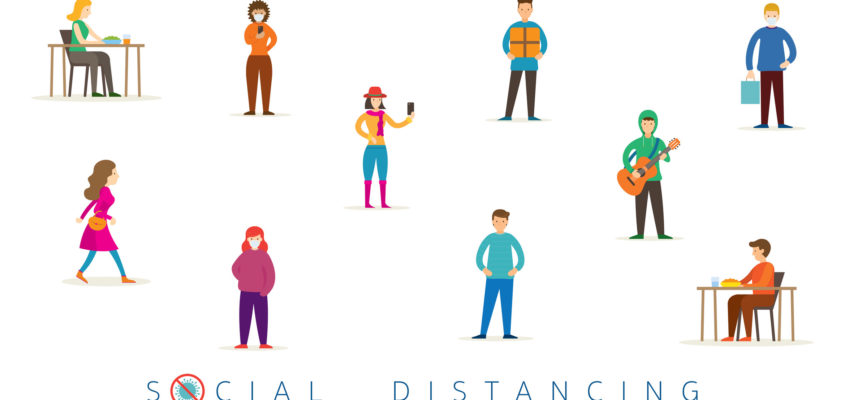
How social distancing affect one’s mental health and how to survive it?
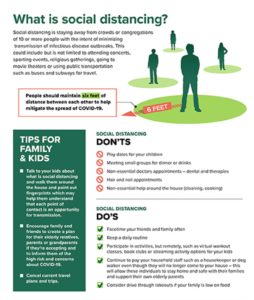
Social distancing affect one’s mental health
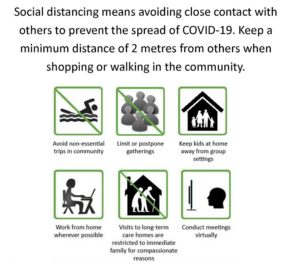
Social distancing affects one’s mental health and can lead to adverse physiological effects on people. In order to slow down the coronavirus spread, govt has adopted stringent measures to keep people apart. But mental health experts are warning that losing everyday social connections comes with psychological costs.
Fear of pandemic illness, forced isolation and a sudden spike in unemployment have hit all over the world. All these can take a significant mental health toll, especially on people who might have already experienced post-traumatic stress disorder.

Coronavirus outbreak have greater rates of post-traumatic stress disorder symptoms
Some recent research and surveys show that people who are quarantined during a coronavirus outbreak have greater rates of post-traumatic stress disorder symptoms than those who are exposed but not quarantined. Having undergone through trauma before is a risk factor for elevations in post-traumatic stress disorder symptoms, and other symptoms like depression when someone is exposed to another life-threatening event.
During this social distancing period, others who are already dealing with mental issues and addiction could spiral while some might develop addictions, noting domestic violence and child abuse also could rise.
There are many families where there may be conflict. Or there may be abuse, and that is certainly something where being forced to stay at home can put them in a psychological pressure.
We have to find ways to stay socially connected to one another. And provide the supports so that all of us — all of us as essential citizens of this community — is here when we get to the other side of this plague.

How social distancing affect one’s mental health and how to survive it?
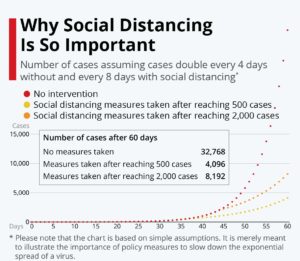
- Never let isolation numb your brain
It is important to note in your mind that isolation doesn’t just numb your brain with boredom. People start getting lethargic when they do not have positive inputs into their small worlds. We can expect depression to kick into this situation. As depression and anxiety are kissing cousins, you can expect that too. These symptoms are likely to get intense during coronavirus-related isolation.
- Have an open and transparent conversation
Open, transparent, consistent communication is one of the most important thing governments, and organisations can do. Ensure people understand why they are being quarantined first and foremost, how long it is expected to last. A big factor in the negative psychological impact is confusion about what is going on, not having clear guidelines, or receiving different messages from different organisations.
- Psychological strain and loneliness
The psychological strain of isolation manifests physiologically, too. It is one of the gravest things that humans can do to their overall well-being. In oldies, social isolation seems to worsen any pre-existing medical conditions. It can be from cardiovascular diseases to Alzheimer’s, but its ill effects aren’t limited to those over 60.
- Who all affect the isolation the most?
The people who are most at the bay of risk from the loneliness associated with COVID-19 are the people who are already at heightened risk of social isolation. Among older adults, people who earn lower-income and men experience isolation at a different level.
These individuals may not have friends or family to call, or maybe unable to do so. Some people have technology as a means of connecting people, but lower-income groups might not even have Facebook or Skype or minutes on their phone. People take that for granted. Using their mobile devices can be a strain on a few people’s incomes, particularly if COVID-19 has left them running out of a job. Minority people are going to be hit particularly hard as they often work in service industries. It increases the risk of social isolation and loneliness and coronavirus. It could pave the path to an economic and social recession.
No matter what your situation is, there are many things you can do to improve your experience while being socially isolated. We suggest exercise as a mood booster. Create structure and predictability as much as you can with those pieces of your life that you do have control over. Pursue neglected projects and get on with life. Be patient with yourself, both now and when this tough time eventually ends. People who go through an isolation period often struggle while reintegrating back into their ordinary routine. Social isolation may slowly become your routine, and losing it may still be a jolt.
Fortunately, you’re not in this alone, and you shouldn’t leave others that way, either. People who are not isolated can think about those people who were in your network that you haven’t heard from in a while. Give them a call or write a letter. Strengthen those weak connections. With any luck, you will emerge from social distancing a whole lot closer.

How to turn your passion to your profession?
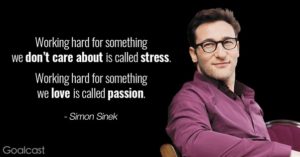
How to turn your passion to your profession? The path to success is to have your desire as your career. The passion to your profession will ensure you climb the ladder of success in an accelerated manner.

Easier said than done is pursuing a passion. You are stepping out of your cocoon and trying to get good at something you may know little or nothing about. The chances are strong that it will take some time to turn something you care about into cold, hard profit. You may probably fail at your initial few attempts. So, it makes sense that many people begin with a lot of enthusiasm, and then give up quickly as the ball goes from the fun court to frustrating court.
But some people stick with their dream and reap the benefits eventually. How do you become like those people to turn your passion to your profession? There is certainly no one right way, but below you will see five proven strategies from successful people.
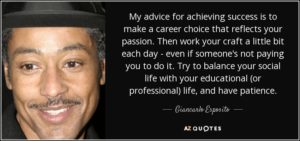
Best strategies to turn passion to your profession
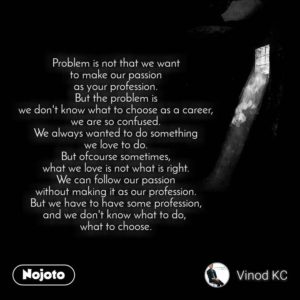
- Use Your Free Time
Bill Gates, the founder of Microsoft, was an exceptional math student. When he was thirteen years old, his school had a PDP 10 computer. It taught people how to code. Bill Gates used to go to the computer room during his lunch break and tinker with the machine until he learns how to program.
There is a lot for people to learn from Bill Gate’s younger self. He followed his passion and acquired a new skill during his lunchtime. Be honest: How many times have you quit something because you can’t find the time for it? The truth is that if it is something that you really want to learn, you will make time for it, whether you get up earlier or work on it during lunchtime.
- Learn From Your Failures
Former Spice Girl Victoria Beckham is one of the most successful fashion designers in the world now. But it wasn’t an easy ride for her.
She was torn apart by critics after her solo singing career failed. It was from this failure that Beckham realised music wasn’t her passion. That is when she got into the fashion business. After facing initial harsh reviews, she ended up excelling in a whole new industry.
If Beckham’s solo singing career had taken off, she might have never become a fashion designer. Sometimes failure can drive you toward another interest altogether. So, never dwell on something for too long, when it doesn’t work out. Instead, think about turning your Plan A into your Plan B. It will work out pretty well.
- Study the Best
Among other achievements, songwriter Randy Bachman’s a member of the band Bachman-Turner Overdrive, famous for hits like “You Ain’t Seen Nothing Yet” and “Takin’ Care of Business”.
A few years back, he wrote a letter to young musicians. It was on how to learn songwriting. He also included his secret: “Studying the greats.” He will not only look for similarities between popular songs but write a sequel to hit songs just for practice.
If you feel like you have hit a plateau, analyse what the best in the industry are doing. By searching for patterns and things you can emulate, you will be able to break through and keep developing your abilities and skills.
- Know When to Listen to Yourself
Many people dream of writing a bestselling book, but only a few of them actually write it so well to land a book deal. Count Dean Koontz a bestselling author as a member of that exclusive club.
How did he hit success? By ignoring others. Really! Koontz warns against the writing groups. He says that the criticism might intimidate you so much and you stop developing your own style. He advises that the real secret to climbing the mountain of success is to listen to your heart and write the story you want to write.
That isn’t to say to neglect all constructive feedback, but be aware that if your so-called support group is making you feel discouraged, you are allowed to turn inward for motivation.
- Give it Time
Paula Scher is now one of the best graphic designers in the world. She is responsible for the trademark logos of companies such as CNN, Windows, and Citi. Her secret? The same one your parents always said to you: “Practice makes a person perfect.”
Scher believes that nothing can stand before years or even decades of hard work. She explains, “It took me a few seconds to draw it, but it took me 34 years to master how to draw it in a few seconds.”
So, never give up on your new learning skills if you don’t seem to be making progress. The fact that it is taking you a while doesn’t mean you won’t achieve the same outcome as experts out there; you just need to give it some time.
So what is the lesson here? It is OK to do something different, even if the same-old works for everyone else. What all is common in these people is that they step out of their comfort zone and do something. They worked hard, and today they have a fantastic career to show for it. So, sit down and start learning that new skill today, because if the story of these people tells you anything, you will be better because of it.
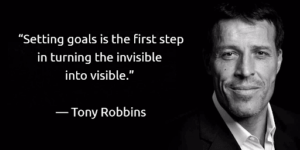

How to attain a successful career? – The best strategies you should follow

A successful career is a treasure box. It will offer you a lot of benefits and real profitable opportunities. We all live in a world governed by social status and money, working your way up to the top surely will improve the quality of life. There are many possible reasons for which a person would desire success.
One of the reasons is that hitting success in your professional life makes you feel better among other people. It also offers you a feeling of security and accomplishment. Many people climbed the mountain of success from a level zero. They have reported that their lives got improved drastically in almost all aspects.
There are several habits and activities that successful people around the world do on how to attain a successful career. The best means of approaching success is by following and mastering what are the strategies that professionals use. Model them according to your needs.
The following strategies will give you enough boosts to advance your career on how to attain a successful career in a delineated manner.
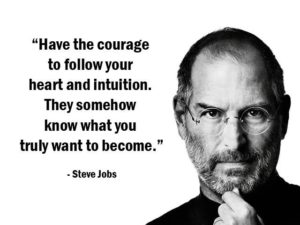
How to attain a successful career?

- Identify with your life goals
Before even consider following a career route, you must get to know what you want to do for yourself. A majority of people will choose following a well-established pattern. The sad part is, they don’t even realise what they do, or they just don’t realize how many other things they could do.
To avoid this awful happening, you should identify what are your biggest rational wishes. Then, start going deeper. Make an in-depth introspection in which you need to think about the connection between your rational goals and your inner desires.
They have to match. Otherwise, you will not get truly fulfilled with your professional life. Identifying with your life goals takes some time and effort. But it is a critical process in any successful person’s journey.
- Build a Professional Resume
Your resume is your way of saying “I am good at this, good at that, and I can assist by doing this and that”. Well, that is why you should build a professional, neat resume or cover letter.
By taking care of this facet, you are making sure that you will never be caught off guard. Opportunities are present everywhere. And you must always be ready with a quality resume.
- Be aware of your strengths
Awareness is a vital key to personal or professional improvement. By being conscious of your inner thoughts, your desires, your strengths, and your disadvantages, you can adapt your life to whatever conditions you are being put through. You will also get many benefits as you can leverage your wisdom and knowledge for the best purposes.
It is better if you choose your long term career according to what you know about yourself. Are you a very patient person? Would you be able to sit nine to twelve hours in an office working on a laptop? Or you would rather be a football coach because you are truly passionate about football and you believe you can become an efficient trainer?
No matter what your strengths and disadvantages are, you should choose a career path that matches your traits and qualities.
- Accept full responsibility for your life and decisions
One difference between mediocre and successful professionals are how they taking responsibility. Whenever something bad happens because you, you should accept it.
Start admitting responsibility for all of your wrong actions and never blame anyone for your mistakes. That is the worst thing you can do. Be calm and never take things personally.
- Always Raise Your Standards
Here is another critical part which distinguishes the successful from the non-successful. Your standards influence the way you think, and behave. If your standards are high, you will never be satisfied with less than you can achieve. Most of the time, people with high standards are more successful than the average.
Every two to three months take a few moments to reflect upon your standards and values. Try to develop them bit by bit up until you realize that you have become the best version of yourself.
- Brand Yourself
Branding is very important nowadays. Big companies are spending hundreds of millions to establish themselves as the “big dogs” in the competitive marketplace. It is an old business tactic used by the most professional firm. Your branding is your image in the market.
Professionals should brand their names and services and improve it constantly. You can do it by starting a blog, creating a professional social media profile, or simply by providing awesome services.
- Network — A LOT
Networking is all about opportunities and connections. When you meet new people, you get a chance to use their skills to your advantage. You must also give back something. It can be your services, your knowledge, your money or anything else. Successful people always network and create life-lasting profitable relationships.
You can start by creating social media profiles on LinkedIn, Twitter, and Facebook. These three networks are the best choices for this type of activity. You will find lots of opportunities and career choices along the way.
For instance, LinkedIn is filled with business professionals that are branding their companies and also networking at the same time. Twitter is also used in these matters. And Facebook is good for everything, including networking.

Conclusion
Cultivating a successful career takes time, effort, and patience. If you are willing to sacrifice some free time and you are willing to get out of your comfort zone, you will certainly succeed. It is not that hard, honestly. It just takes courage and commitment to follow everything that you have targeted.
